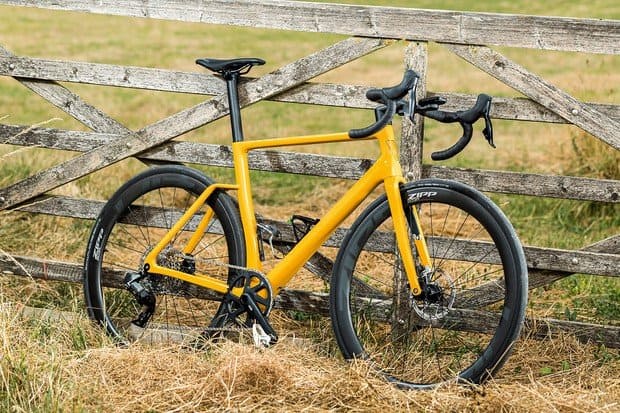Travelling has always been a passion of mine, and as an avid cyclist, I’ve often felt the urge to merge these two loves. Exploring new landscapes on a trusted bike offers unparalleled experiences. Whether you own a road bike, mountain bike, or gravel bike, ensuring its safety during fly with a bicycle on travel becomes paramount. Through my journeys, I’ve gathered a wealth of information that I believe would be invaluable to fellow cyclists. So, let’s delve into the intricacies of travelling with our beloved two-wheelers.
Table Of Contents
- 1 How To Fly With a Bicycle Tips and Guide
- 1.1 1. Understanding Your Bike’s Specifications
- 1.2 2. Pre-Travel Preparations: Lessons from the Road
- 1.3 3. Packing: The Art and Science
- 1.4 4. Bike Shipping Cases: The Second Armor
- 1.5 5. Navigating International Waters
- 1.6 6. The Prudence of Insurance
- 1.7 7. Third-Party Transport Solutions: A Game-Changer
- 1.8 8. Post-Travel: Getting Ready to Ride
- 2 Airline Fees on Flying with a Bike:
- 3 In Conclusion
How To Fly With a Bicycle Tips and Guide
1. Understanding Your Bike’s Specifications

In my early days of fly with a bicycle, I quickly realized that familiarity with my bike was crucial. Knowing the dimensions, weight, and unique features of your bike will dictate how you approach packing. A mountain bike, for instance, has different requirements than a slimmer road bike. This knowledge will make the process smoother and more efficient.
2. Pre-Travel Preparations: Lessons from the Road
Before I even think of packing, I set aside time for thorough bike maintenance. This isn’t just for the bike’s sake, but for safety. Ensuring that every part is in optimal condition eliminates potential problems later. And it’s not just about the bike. I’ve found that a toolkit with essentials – spare tubes, a multi-tool, patch kits – can be a lifesaver. We have explained this briefly at CyclistsAuthority.com to understand why this one is very important. There have been times when a simple multi-tool made the difference between continuing my journey and being stranded.
3. Packing: The Art and Science
Every bike type has its unique packing needs:
- Road Bikes: My bike, with its slender frame and delicate components, requires careful disassembly. I remove the pedals, handlebars, and wheels. Each part is then meticulously wrapped, protecting them from any potential jostling during transit.
- Mountain Bikes: These are a bit more robust but come with their own set of challenges. The shocks and disc brakes, especially, need attention. I always ensure they’re shielded from potential impacts.
- Gravel Bikes: My gravel bike, given its adaptable nature, requires a blend of the methods used for road and mountain bikes. Components are disassembled as necessary and secured with protective materials.
Speaking of protective materials, through trial and error, I’ve come to trust a combination of bubble wrap, foam, and specialized plastic covers. They’ve ensured that my bike arrives in pristine condition, no matter the distance travelled. These are one of the best tips for flying with a bicycle when you travel.
4. Bike Shipping Cases: The Second Armor
Over the years, I’ve tried various shipping cases. Each has its strengths, So choose the best option for your travel and easy to fly with a bike always.
- Bike carry bag --- This folding bike bag is suitable for regular 26 inch bikes,even up to 27.5 inch bikes with wheels and handlebar off. So portable to carry. Best for fathers day gifts.
- Easy to load in --- Disassemble the front wheel and handlebar of the bike,then put the whole bicycle into the bag and zip up.
- High Quality Material --- Heavy duty 600D oxford fabric + 300g non-woven fabric,strong shoulder straps and two accessories pockets of this bicycle carrier case
- Dimensions --- Unfolded size: 55.1*31.4*11 inch(140cm x 80cm x 28cm); Folded size: 15.7*7.4*5.5 inch(40cm x 19cm x 14cm)
- Hard Cases: These are the fortresses of bike transportation. They offer unparalleled protection, and while they’re heavier and often pricier, the peace of mind is worth it. I personally recommend the SCICON AeroTech Evolution X TSA for its durability and ease of use.
- Soft Cases: They’re lighter and more versatile, making them perfect for trips where weight is a concern. The EVOC Bike Travel Bag Pro is a standout, offering protection without the bulk.
5. Navigating International Waters
Travelling internationally with a bike brings additional considerations. I always prioritize researching airline policies on bike transportation. Overlooking this has cost me unexpected fees before. Similarly, being prepared for customs duties and regulations helps avoid unwanted surprises.
6. The Prudence of Insurance

One of the lessons I’ve learned the hard way is the value of bike-specific travel insurance. On one of my trips, my bike incurred damage. Had I not had insurance, the repair costs would have been prohibitive. Insurance not only covers potential damage but also theft, offering comprehensive protection. It is important to be safer and understand the place you are travelling before fly with a bicycle.
7. Third-Party Transport Solutions: A Game-Changer
Companies like bikeflights.com have revolutionized bike travel. They handle the logistics, ensuring that your bike reaches your destination safely. Their professionalism and efficiency have saved me from many potential headaches.
8. Post-Travel: Getting Ready to Ride
Once at my destination, I prioritize reassembling my bike. It’s essential to check for any damage that might have occurred during transit. Before venturing out, a thorough safety check ensures that every component is functioning as it should.
Airline Fees on Flying with a Bike:
Each airline has different rules for flying with a bike. Ourdoorhacker.com compiled a comprehensive list of major airlines, including their fees and requirements.
| Airline | Total Fee | Weight and Size | Requirements |
| American Airlines | $25-$35 | Under 50 lbs and less than 62 ins | NA |
| Delta Airlines | $150 | Bicycles must not exceed 115 linear inches (292 cm) in length. If a bicycle exceeds this weight limit, the excess weight fee will be applied. However, no bicycles over 100 lbs will be accepted. | Your bike should be placed inside an appropriate container (cardboard, canvas or hard shell), with handlebars secured sideways and pedals removed before being sealed in plastic, Styrofoam or similar material for safe travel. |
| United Airlines | Contact a Reservation Center or visit an Airport Customer Service Agent to add a bike to your reservation. When travelling with a bike, you will be required to sign a limited liability release. | All bags must weigh no more than 50 pounds (23 kg) or 62 inches total linear inches, otherwise a $150 fee will be applied. | 1. Handlebars and pedals must be flipped sideways. 2. All loose items should be protected with plastic foam or other protective materials 3. Transporting a bicycle in a box should be done with a seal. 4. Please contact United if your itinerary includes United Express flights for information on aircraft cargo limits. |
| Jet Blue | $50 | The maximum size of a bike case is 80″ in total dimensions (length, width and height). | *Bicycles are accepted in a hard sided, padded bicycle case. Bicycles will only be accepted if they are in a hard case with the pedals and handlebars secured in the sideways position. Further Information *Boxes are not accepted as baggage on international flights, except for flights from/to Cuba. *Bicycle cases must only contain bicycles; cases that contain additional items will be charged excess baggage fees *Bicycles will NOT be accepted on flights departing/arriving from the Dominican Republic (Haiti), Peru, and Port of Spain. *Bicycles can be accepted on flights from/to Cuba, provided they are packed in a hard-sided, padded plastic case that is designed for bicycles. The case must not exceed 70 pounds or 80 linear inches of length + width + height. If the container and bicycle are larger than 62 inches and 50 pounds (length + width + hight), a bicycle fee is charged. Check-in is not allowed for bicycles that have been improperly packed or in boxes. |
| Spirit Airlines | $75 | *Inflate your bicycle tires before the flight to avoid damage. | *Bicycles are accepted in a hard sided, padded bicycle case. Bicycles will only be accepted if they are in a hard case with the pedals and handlebars secured in the sideways position. Further Information *Boxes are not accepted as baggage on international flights, except for flights from/to Cuba. *Bicycle cases must only contain bicycles; cases that contain additional items will be charged excess baggage fees *Bicycles will NOT be accepted on flights departing/arriving from the Dominican Republic (Haiti), Peru, and Port of Spain. *Bicycles can be accepted on flights from/to Cuba, provided they are packed in a hard-sided, padded plastic case that is designed for bicycles. The case must not exceed 70 pounds or 80 linear inches of length + width + height. If the container and bicycle are larger than 62 inches and 50 pounds (length + width + height), a bicycle fee is charged. Check-in is not allowed for bicycles that have been improperly packed or in boxes. |
| Frontier | $75 | No items exceeding 99.9 lbs or 109 inches in length will be accepted. | *Bicycles’ handlebars must be fixed in a sideways position *Pedals need not be removed when they are wrapped in plastic or other similar materials. *Bikes must be enclosed in a durable, protective case or box. |
| Southwest Airlines | part of checked luggage allowance | Overall dimensions of 62 inches and weight less than 50 pounds | 1. All bicycles should be packed correctly in a bike box, or bag. 2. Handle bars can be removed or turned to the side 3. Pedals turned in or removed The pressure of nitrogen gas used in mountain bike struts should not exceed 200kPa or 29 PSI (pounds-per-square inch). 4. Any cartridges used for inflating tire are small (less than 50 ml), and contain non-flammable gases. 5. Put any loose items into a bag and then in the box Seal the box with your name, phone number and address. 6. Make sure that no part of your bike protrudes from the box |
| Aeromexico | $75 | NA | NA |
| Air Canada | $50 | 32kg 70lb Dimensions linear (length + width plus height): 292cm 115 in | * The bicycle must be packed in a hard-shell container designed for shipping, with the handlebars positioned sideways. *If it is a collapsible bike, then the bicycle should be put in a bicycle case. If the bicycle is not packaged properly, it may be refused carriage. |
| Air New Zealand | Part of free luggage allowance | Standard bags are defined as sporting items that are less than 2m in length and weigh up to 23kg. If excess baggage is not charged, it will be. On jet aircraft, the maximum weight allowed is 32kg. The maximum length oversize is 2.5m. | If you exceed the 15-inch (292 cm) limit and 50 lbs (23 kilograms), there will be an extra baggage charge. |
| Alaska Airlines | $25 | NA | You could pay more than $25 if you have a bike that is both oversized and overweight. |
| British Airways | Part of your baggage allowance or $100 as an extra bag | Up to 190cm (75in) in length | 1. Remove the pedals from the bike or fix them to the inside. 2. Fix the handlebars in a sideways position 3. Deflate the tires to minimize the risk of damage |
| Copa | Included in the standard luggage allowance. In the event that this amount is exceeded, a $100 fee is charged in addition to excess luggage fees. | Up to 32 kg (70lb) and up to 62 linear inches. On routes where the maximum luggage allowed is 23 kilos, bicycles weighing between 24 and 32 kilograms will be charged an excess luggage fee. | 1. Sport bikes with a single-seater (non-competitive). 2. All small items, such as screws, chains, brakes and so on, should be stored in plastic bags. 3. The pedals and handlebars should be stored separately. 4. Bicycles should be packed properly in a box to prevent them from coming into contact with the hold of an airplane. |
| Emirates | Part of your baggage allowance | 150cm (59 inches) | No requirements on their website apart from the item being well packed. |
| Hawaiian Airlines | $35-$150 | 1. Must have a suitable box or packaging for the bike 2. The handlebars must be positioned lengthways on the frame 3. Remove the pedals and any other parts that protrude. 4. Tire pressure should be reduced | 1. You’ll have to turn the handlebars around and remove the pedals. Or, you can wrap the pedals with plastic foam or other similar material. 2. Bicycles must be packed properly in a hard case or box. 3. You’ll be asked to sign a liability waiver when you check-in 3. Transport is subject to space availability |
| KLM | Dependent on flight you can check individual fees here | NA | Part of the standard luggage allowance |
| Singapore Airlines | Included in your free baggage allowance | Unable to accept any item above 32kg | NA |
| Virgin Atlantic | Part of the free baggage allowance | Maximum of 23kg | 1. Turn the handlebars to align them with the frame. 2. Remove all attachments including pedals. 3. Make sure the gearing is well protected. 4. Protect the frame by wrapping it in bubble wrap. |
| Qatar Airways | Part of free baggage allowance | 32kg | *Bicycles can be checked as baggage or cargo. |
| Qantas | Part of baggage allowance | 32kg | *Bicycles can be checked as baggage or cargo. |
In Conclusion
Flying with a bike is undoubtedly challenging, but the rewards are immeasurable. From the winding roads of Tuscany to the rugged trails of the Rockies, each journey has enriched my life. With the right knowledge and preparation, anyone can safely travel with their bike, making memories that will last a lifetime.









